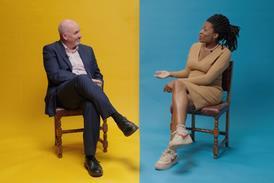I’m approaching BVE expecting to see evolution not revolution, says Jon Try
I don’t think I’m unusual in sitting in an office surrounded by five screens displaying pictures or other information.
The thing is that it’s barely any different wherever you are today; phone, tablet, laptop and TV are all vying for attention and all needing content to be supplied.
But the real difference is in how that content gets to the screen and how we control it.
Whereas broadcast TV was only handled on one, well-defined device, we now expect the same on all our screens.
How should we react to this additional demand?
The clear message is that we should make more content available for all these devices and we do.
The move towards more on-demand viewing started years ago and we’ve been supporting that since 2001.
The transition to make the same content available on multiple devices is both simple and complex.
Simple in that the content can be easily coded in the right format and complex to achieve in a way that preserves quality and leads to new revenue to pay for it.
Just last weekend a colleague paid to view a Dutch premier league football match over the internet. After negotiating a fairly complicated pay mechanism, the streaming started quite well.
However it wasn’t too long before the quality dropped and eventually the picture froze with the informative message “buffering”. Seconds later it was fine again, but that was just the first of many such incidents that meant two out of three goals were missed.
This experience is not unique and demonstrates we have some way to go before we achieve the same quality and viewer experience using the internet as a delivery mechanism.
Finding and controlling content also becomes an issue. The choice becomes too great and the rights management are a challenge to identify the device being used and a user’s location and permissions.
All achievable, but only by increasing the cost of delivery.
But while the market at one end is all about making everything available to everybody and often trading off quality to do so, we also see advances such as 4K UHDTV , which are pushing the opposite direction.
These are truly stunning, sharp pictures that almost hurt your eyes to watch.
However, it could be a while before we see widespread introduction. I’m reminded that it was at least 20 years from the first HD demonstrations to it becoming widely available and it’s only just 10 years so far for 4K.
So I’m approaching BVE expecting to see evolution not revolution in technology that will be safe and mostly predictable. But more to the point, viewers will be able to benefit from it.
What I hope for is the best of the ‘anytime, anywhere’ solutions that truly enhance the viewer experience.
But one final thought: what if we were inventing the technology for television today? Would we still base it on what could be achieved with spinning discs and clockwork or could we come up with a better way?
Jon Try is Chello DMC vice president of technology


























No comments yet